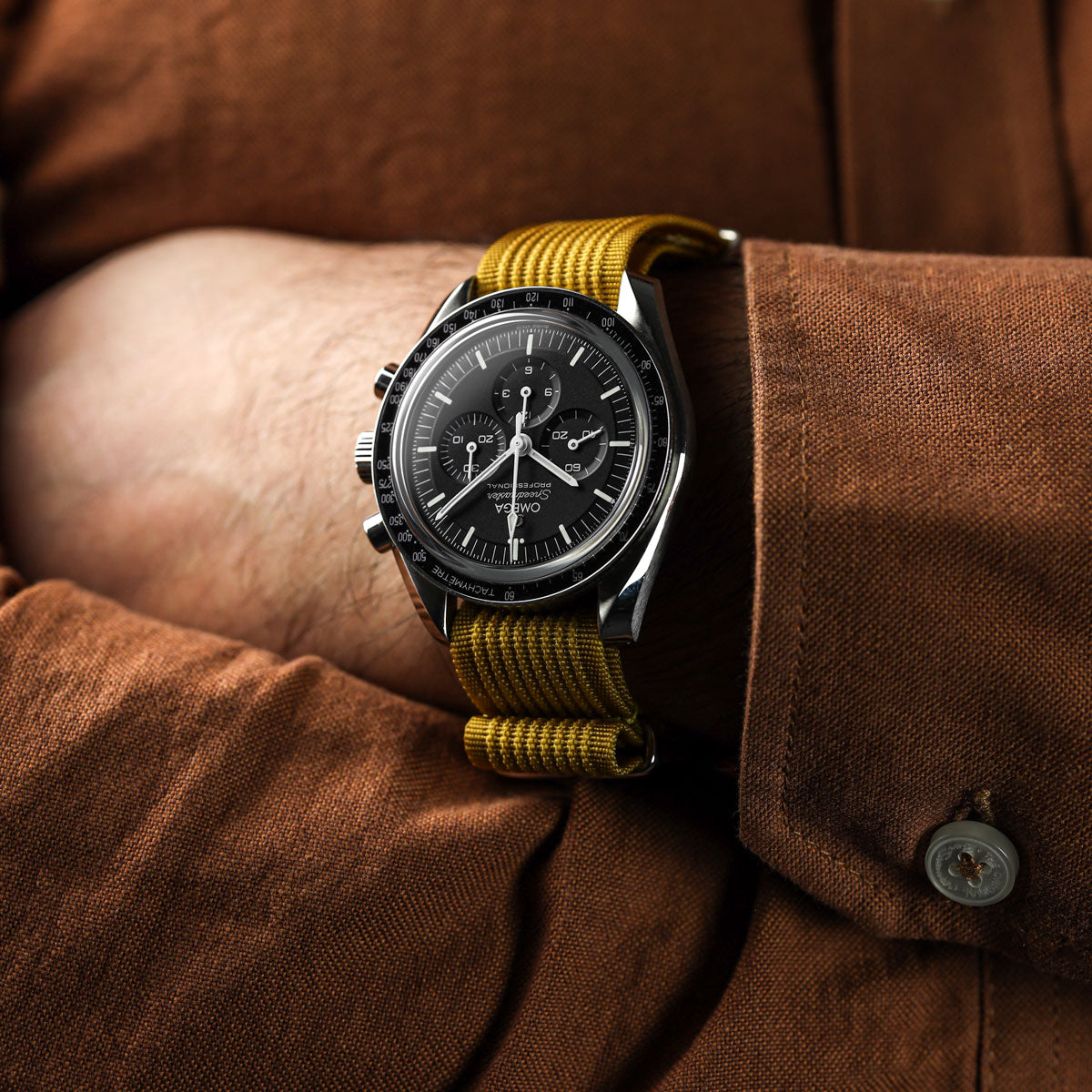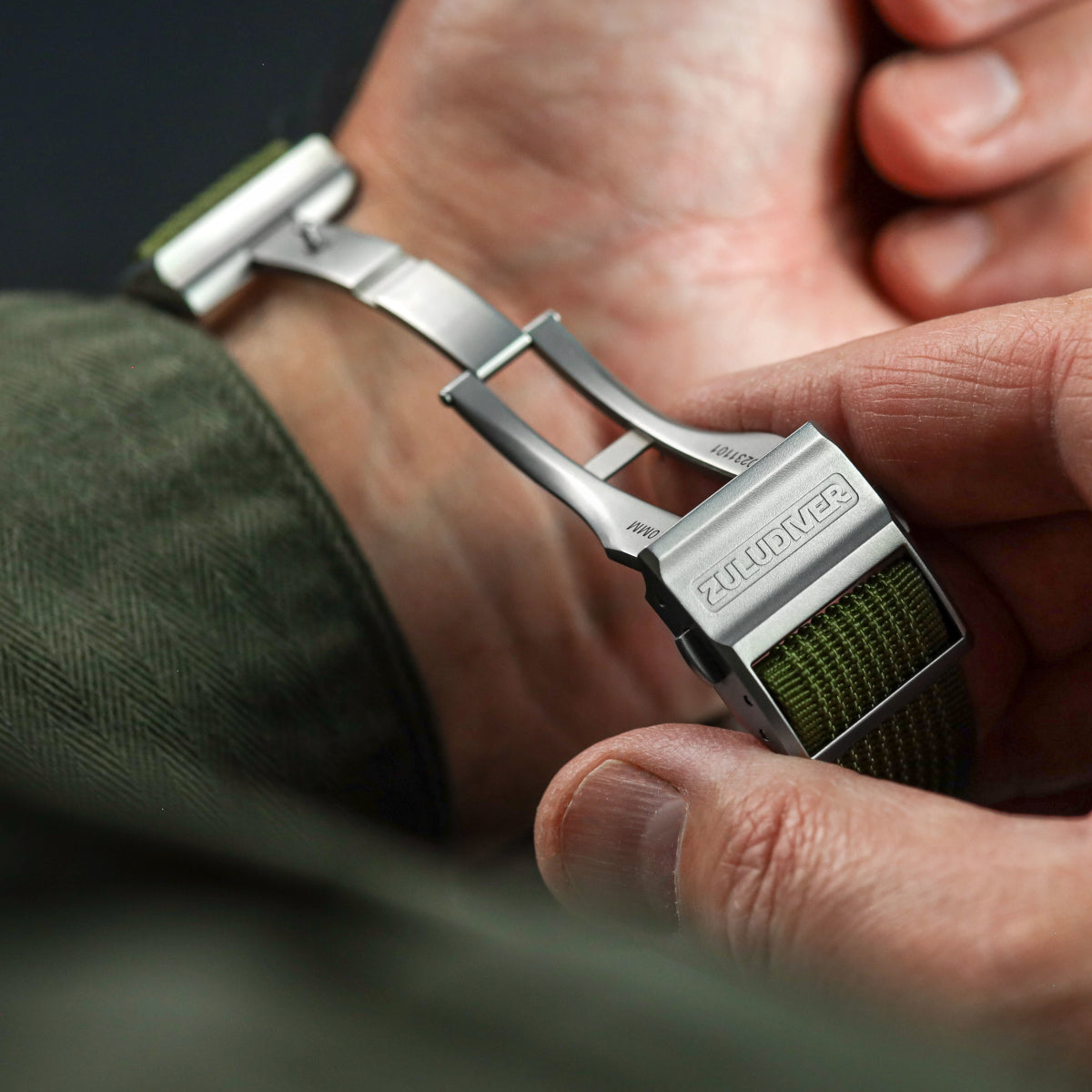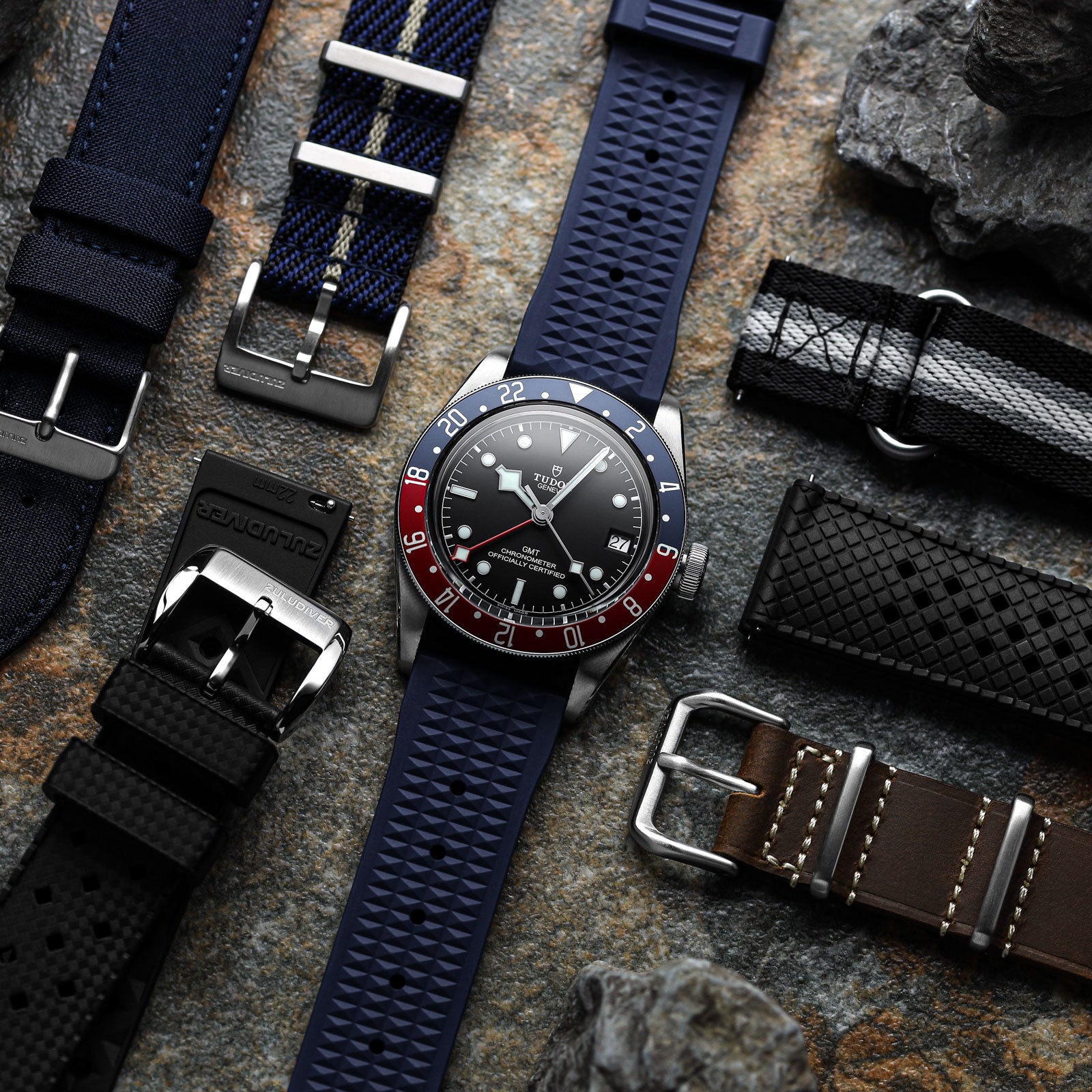Your Cart is Empty

Think you know military straps? Think again, as we test drive a Crazy Horse

Categories
December 14, 2021
If you are a die-hard military watch strap user, you probably have multiple straps you can ring the changes with. They are inexpensive, look good and can radically change the appearance of a watch. From James Bond to Heritage Military there are countless fabric designs to choose from so you could be forgiven for thinking there are few avenues left for the design gurus to explore. However, you would be wrong as possibly the most striking watch strap yet has been released by ZULUDIVER in the form of the Crazy Horse Leather watch strap.

Leather watch straps are as old as wrist watches, and we have benefitted from fabric straps since the early 1970s. Nevertheless, the successful combination of this classic design and high-end leather is relatively new.
ZULUDIVER Crazy Horse straps are cut and crafted from oiled 'crazy horse' pull-up premium leather. Pull-up leather is a natural, breathable leather, also known in the industry as waxed leather. The material is infused with hot oils and waxes during tanning. This process creates an extremely durable material which does not crack and produces uniquely beautiful hues and patina patterns where the material reacts with the skin and where it bends and rubs.

Solid steel keepers and buckles have been fitted to the new strap to retain the essential elements. ZULUDIVER have also detailed the strap with a hot-stamp line around the edge, and hand painted and sealed the edges with coloured stain. This strap is available in 18mm, 20mm or 22mm and two brown colours (although more will follow). As a reassuring mark of the authentic quality ZULUDIVER has been branded onto the inside of the leather.
Crazy Horse Road Test
The proof of any new strap is in long-term use. Utilising watches from my personal collection and a few vintage gems borrowed from a friend I transferred several models over to Crazy Horse straps and alternately wore them over a month in such diverse situations such as Christmas shopping and inclement dog walking during Storm Arwen.
First impressions of the strap conjured up a distinctly vintage feel. While the 20mm straps looked good on a steel Rolex or Omega for me the Crazy Horse sat best on older style watches which complemented the rich patina the strap develops, mirroring the aging process we all love so much on the dials and lume of vintage time pieces.
The 18mm Crazy Horse was worn on two borrowed 1960s watches. A beautiful gold Trebex Non-Magnetic and an early tool watch in the form of a Seiko Seahorse ref. 66-8980.

Trebex was a relatively small London brand, a subsidiary of Milex, who first began making watches in the early 1900s. The test watch was fitted with a standard 2-piece leather strap and, no surprises, the new Crazy Horse strap fundamentally changed the appearance of the watch. It was now presented as a more purposeful package pushing away from the label of dress watch. Although the technical characteristics of the watch had not changed, the feel had been transformed and the Trebex now took on a more adventurous air, harking back to eras and places where perhaps the non-magnetic properties may have been useful.

Seiko needs no introduction although the Seahorse is relatively uncommon. It was one of Seiko’s early genuinely water-resistant models and was aimed firmly at the recreational snorkelling and skin-diving community of the early 60s. On this model the Crazy Horse again worked its magic by changing the look and feel of the watch. The Seahorse had been on a high-quality blue leather strap, which worked well, but the new strap generated a more robust look without being overly militaristic.
I had been planning to test the 22mm Crazy Horse on a specific watch from day 1 - my WW2 A-11 copy. Military watch straps were not widely used in WW2 but their immediate predecessor, the AF0210 watch strap, was deployed from 1945 onwards and some of the famous Dirty Dozen watches were issued on it. My A-11 was already on a tan ZULUDIVER fabric watch strap, so I was looking forward to a new look and to using the leather on watch where there would be no issue exposing it to the elements.

The Crazy Horse was (as expected) ideally suited to this style of Field Watch and thoroughly enhanced the vintage look. On several occasions the strap was exposed to rain, yet the leather seemed unaffected thanks to the special treatment of the pull-up material. The watch was taken on and off and the leather quickly became soft and comfortable to wear. Blemishes, scuffs, and marks where the strap folded and fastened soon became part of the charm of the Crazy Horse material and the character of the watch. I can say with some certainty that this is the best strap I have had my A-11 on. It creates an image I like and suits the watch, and I can think of no better strap for this style of original or homage timepiece.
Final Thoughts on the Crazy Horse Road Test
Truth be known I was not 100% sold on the concept of a leather type before I tested the Crazy Horse. I have been a military watch strap user for decades and I had a rather rigid view of how they should look and perform. I must eat my words now and admit that I am very impressed with the Crazy Horse leather strap. There are lots of Crazy Horse images on the ZULUDIVER website showing the strap on a multitude of platforms to give you the best idea of how it will look. Military watch straps are a design I favour above all others and, contrary to my expectations, it is a real treat to have one that can grow and evolve with you, your watch, and the journey you share together.

About the Author: Richard Brown
About the Author: Richard Brown
I truly believe one of the best partners in exploration and adventure is a fine watch. Over 30 years of collecting, my fascination with the technical capabilities of both vintage and modern timepieces has never abated and it is a privilege to be able to share this passion through writing.
More Articles by Richard Brown




